Sony STR-DE685, STR-DE595, STR-DE485, STR-DA3000ES, SS-V831ED Guide
...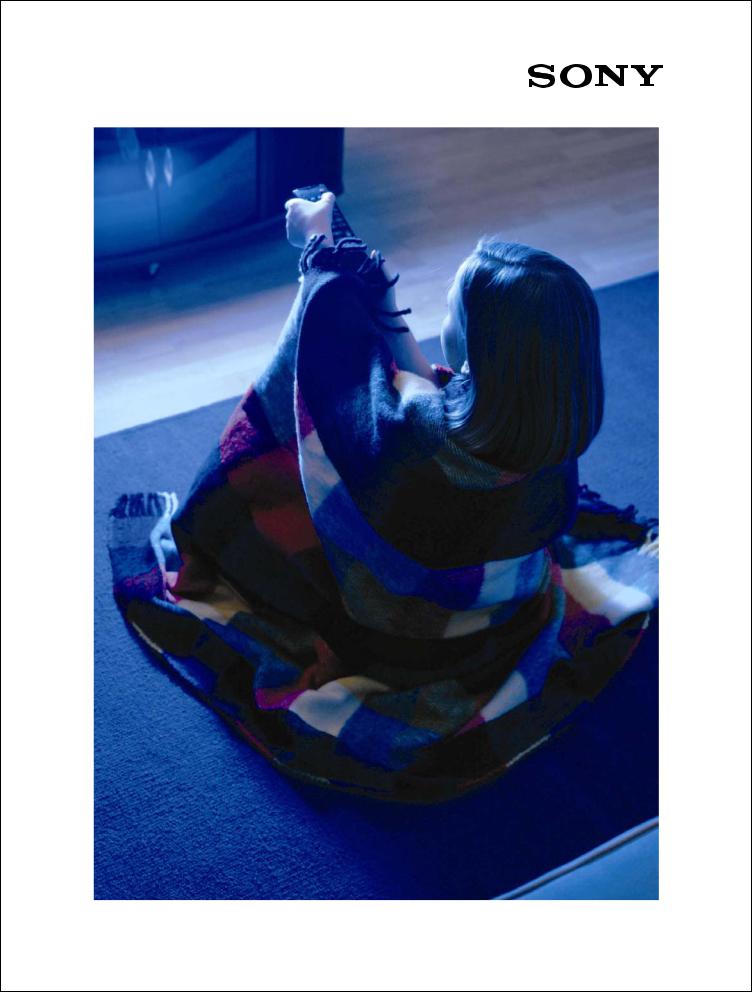
The Sony Guide to Home Theater

Contents
What is Home Theater? ................................................... |
Page 3 |
Why Sony? ...................................................................... |
Page 4 |
What You'll Need: Sources, Sight & Sound..................... |
Page 6 |
Home Theater Sources |
|
DVD Players........................................................ |
Page 7 |
About Progressive Scan....................................... |
Page 9 |
Super Audio CD Playback................................... |
Page 10 |
Digital Satellite Receivers.................................... |
Page 11 |
About High Definition......................................... |
Page 12 |
High Definition TV Receivers............................. |
Page 13 |
Personal Video Recorders.................................... |
Page 14 |
Network Media Receiver...................................... |
Page 15 |
VHS Hi-Fi VCRs…………………………..…… |
Page 16 |
Home Theater Sight |
|
A New World of Choices..................................... |
Page 17 |
Choosing an Aspect Ratio.................................... |
Page 17 |
Choosing a Screen Size........................................ |
Page 18 |
Choosing a Screen Type....................................... |
Page 19 |
Features to Look For............................................ |
Page 25 |
Home Theater Sound |
|
About Surround Sound......................................... |
Page 28 |
Surround Sound Formats...................................... |
Page 29 |
A/V Receivers...................................................... |
Page 30 |
Speaker Consistency............................................ |
Page 33 |
Types of Speakers................................................ |
Page 34 |
Bringing it All Back Home |
|
Before You Buy................................................... |
Page 35 |
How to Buy.......................................................... |
Page 36 |
Where to Put It All............................................... |
Page 38 |
Finishing Touches................................................ |
Page 39 |
Home Theater Connections |
|
Audio Connections............................................... |
Page 40 |
Video Connections............................................... |
Page 42 |
Home Theater Glossary.................................................... |
Page 45 |
A Final Word.................................................................... |
Page 51 |
The Sony Guide to Home Theater |
2 |
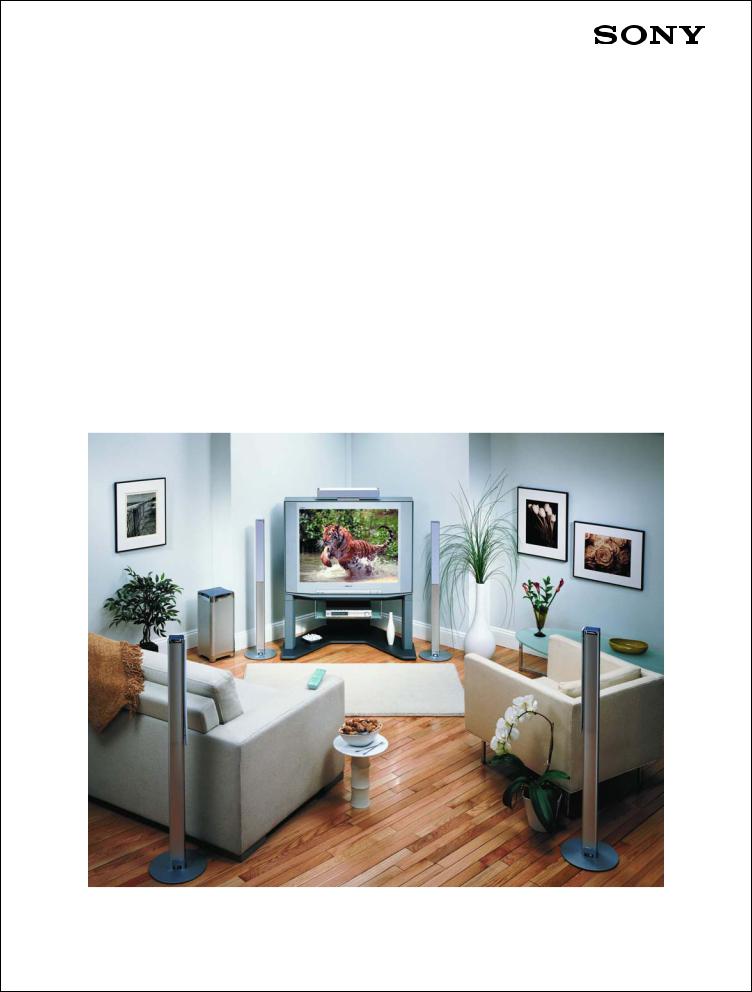
What is Home Theater?
Think of what makes movies in a theater so compelling. Consider the giant screen, teeming with brilliantly detailed, vivid color pictures. Think of the sound, sometimes booming with explosions, sometimes delicately whispering and always immersing you in a full 360-degree experience. At the movies, these elements can come together with astonishing emotional force.
Home theater is the technology that brings this experience into your room. And there's never been a better time to make your move. Compared to the systems of just a few years ago, today's home theaters enjoy far greater realism, drama and impact. Today you can benefit from recent breakthroughs in electronics such as progressive scan DVD players, flat-panel televisions and Dolby Digital® surround sound. What's more, packaged systems make assembling a home theater easier than you ever thought possible.
So if you've been on the outside of home theater, now is the time to jump in. And if your home theater is a few years old, now is the time to upgrade.
The Sony Guide to Home Theater |
3 |
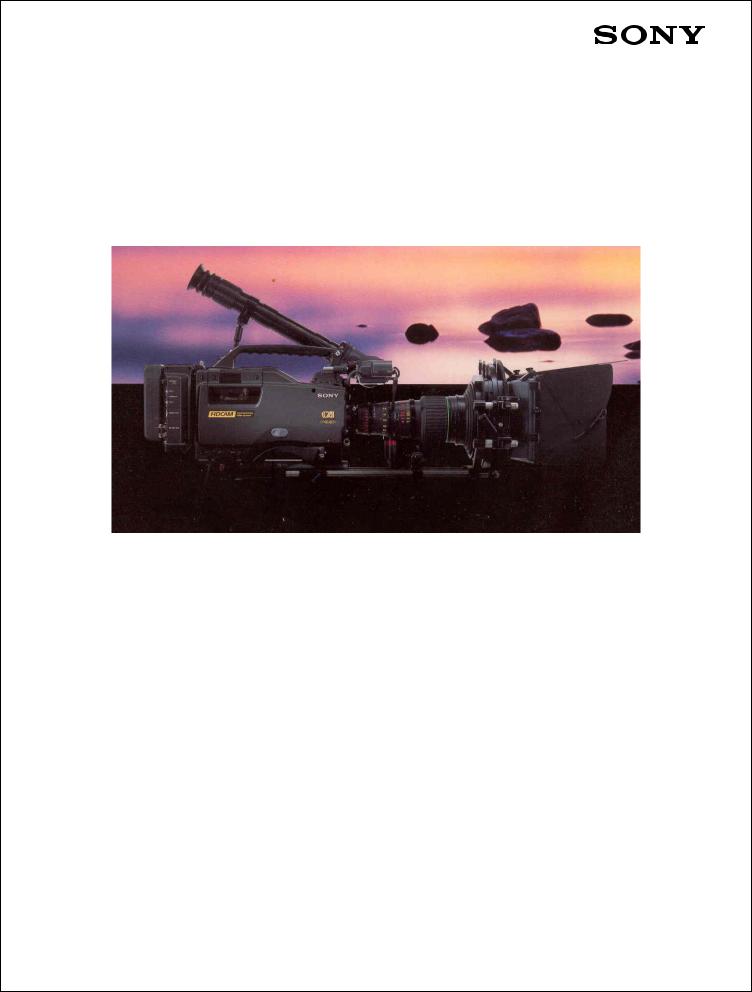
Why Sony?
No company is better prepared to provide your home theater than Sony. We coinvented many of the essentials of home theater, including Compact Disc and DVD. Our award-winning FD Trinitron® WEGA® television is the gold standard in picture quality. Our Plasma WEGA™ and Grand WEGA™ televisions have won rave reviews. And Sony leads the industry in both A/V receivers and packaged home theater systems.
The Sony CineAlta camera has been used to capture major Hollywood action adventure movies, comedies, dramas, indie films and a full range of episodic television, commercials and music videos.
But that's only half the story. Our knowledge of the technology extends well beyond your living room. After all, Sony Pictures Entertainment is one of Hollywood's leading movie companies. Sony's CineAlta™ cameras are at the cutting edge of digital movie making. Sony microphones, mixing consoles and digital audio recorders are acclaimed by studio professionals. The Sony Dynamic Digital Sound® (SDDS®) system is a fixture in movie theaters from coast to coast. And you can find Sony products in the broadcast, cable and satellite TV studios where programming is created, edited and distributed.
The Sony Guide to Home Theater |
4 |
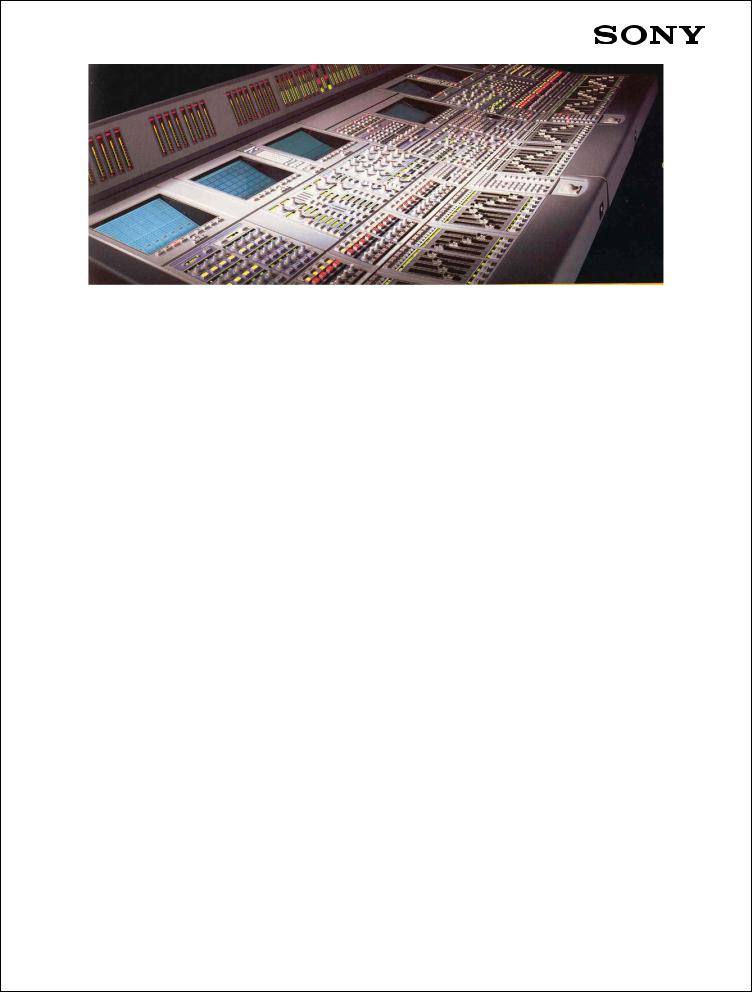
A breakthrough in professional audio, the Sony OXF-R3 Oxford digital mixing console.
In all the world, no other company has this intensity of home theater focus—or this breadth of home theater expertise. Only Sony.
The Sony Guide to Home Theater |
5 |
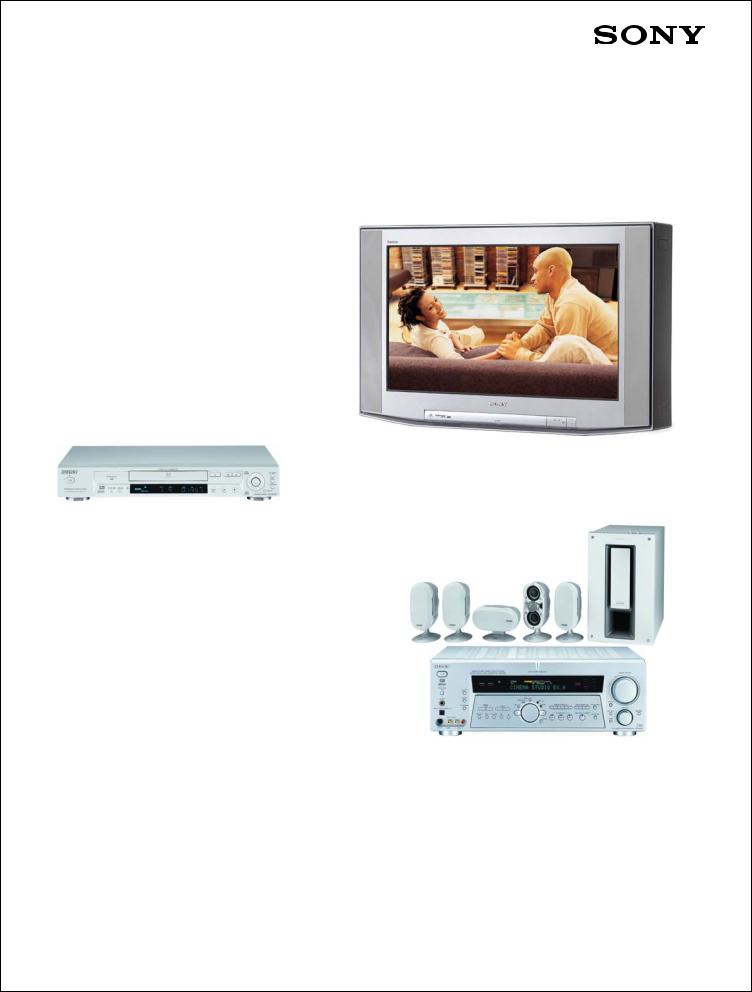
What You'll Need:
Sources, Sight & Sound
Home theater combines three essential elements into one powerful experience. These elements are Sources, Sight and Sound.
SOURCES. A good DVD player is the essential source for today's home theaters. In one easy purchase, a DVD player offers studioquality pictures, CD-quality sound and access to the over ten thousand movies available on DVD!
SIGHT. Home theater requires a big screen, at least 27 inches diagonal. Thanks to the "high scanning," "High Definition monitor" or "High Definition upgradeable" televisions, bigger is also better.
SOUND. To reproduce the full impact of surround sound, home theaters use at least a 5.1-channel speaker system connected to an A/V receiver that incorporates a Dolby Digital decoder.
The Sony Guide to Home Theater |
6 |

Home Theater Sources
DVD Players
The essential home theater source component, a DVD player is also one of the best entertainment values today. It delivers digital picture quality that until recently you would only have seen in a TV broadcast studio. You'll hear digital-quality surround sound. You'll enjoy over ten thousand titles including movies, concert videos, children's programs and more. Of course, compared to videotape, DVDs are more compact, more durable and offer much faster access to individual movie scenes. And DVDs never need rewinding.
DVD MOVIES. Thousands of titles are available for sale or rent, each one carrying the promise of spectacular pictures and superlative sound.
Features to look for:
Progressive scan. This feature effectively doubles the picture quality. To get the benefit of progressive scan, you'll want to connect your DVD player to a "high scanning," "High Definition monitor" or "High Definition upgradeable" television. If you own or you're thinking of buying one of these televisions, then a progressive scanning DVD player is a must.
3-2 reverse conversion is a technology employed in the better progressive scan DVD players. It retains the integrity of the movie's original film frames. You'll see a clearer picture, especially on scenes with movement.
The Sony Guide to Home Theater |
7 |
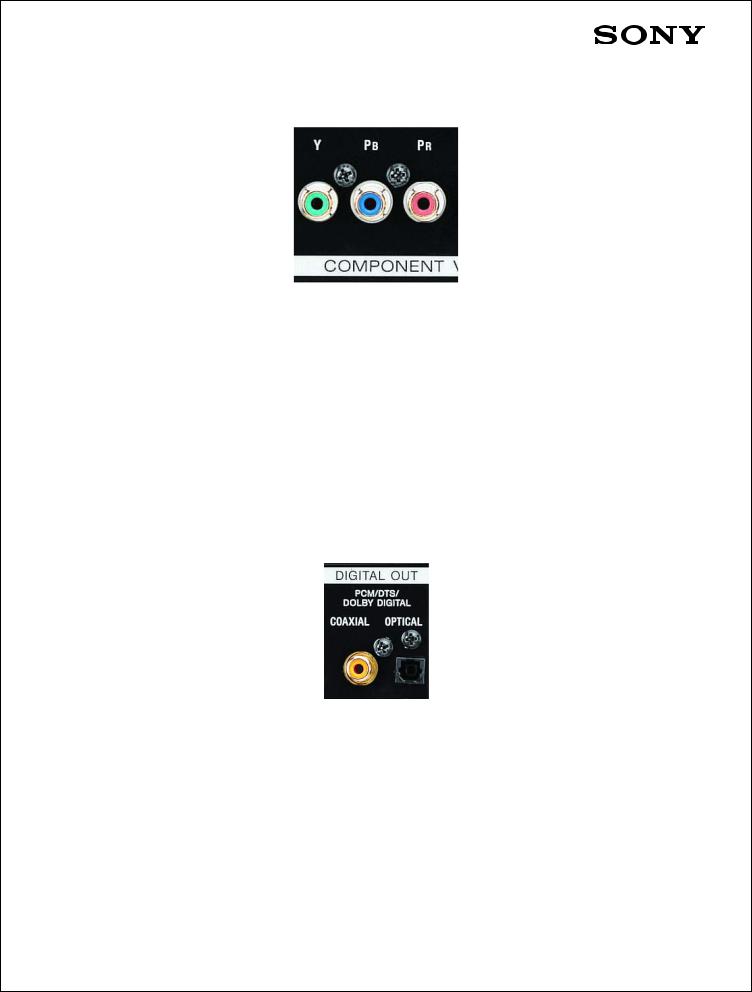
Component video outputs. These Y/PB/PR outputs are a must for progressive scan DVD—and they're highly desirable for all other players. They do the best job of preserving the picture quality.
Component video outputs (Y/PB/PR) are the best way to convey the full quality of the signal from the DVD player to the television.
MegaStorage® DVD changer capability. This lets you load any mix of up to 300 CDs and DVDs for pushbutton access to all your music and movies. No more rummaging through the shelves. No more fumbling with jewel boxes.
Super Audio CD playback. These new high resolution discs provide the best sound quality available today. And multi-channel Super Audio CDs are the perfect complement to multi-channel home theater speaker systems.
DVD-R/RW, CD MP3 playback. It's best to get a DVD player that can handle all the different types of discs you'll want to play.
Digital audio outputs. To enjoy surround sound, you'll want to connect the optical or coaxial digital audio output of the DVD player to your A/V receiver.
Digital audio outputs feed the digital bit stream to your A/V receiver for decoding.
The Sony Guide to Home Theater |
8 |
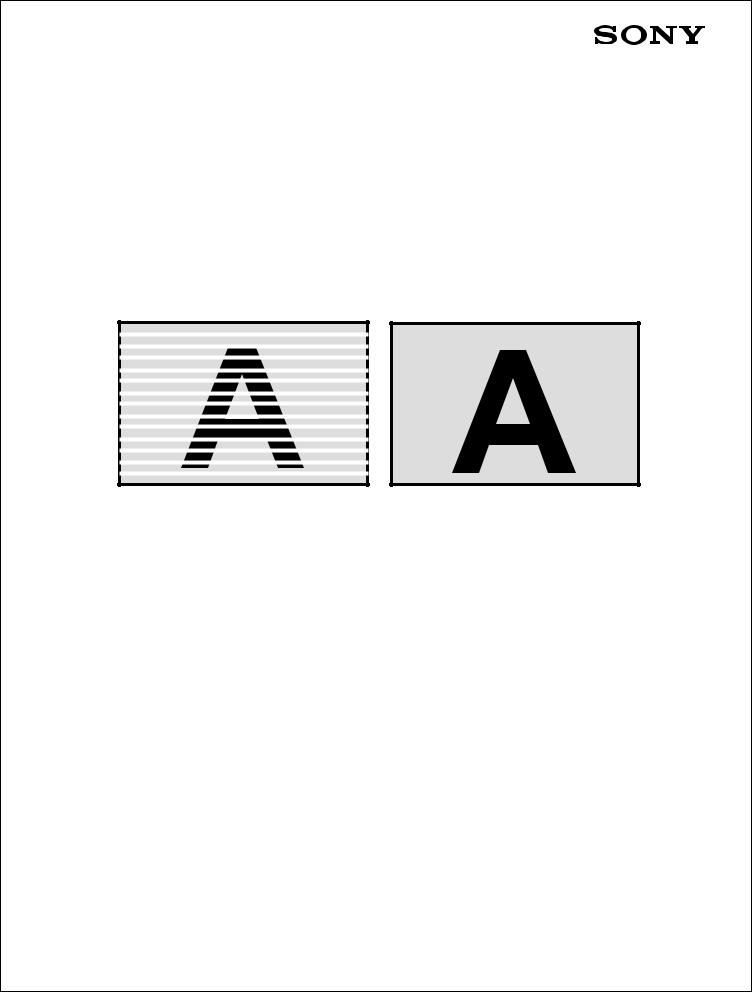
About Progressive Scan
In video, what appears to be a continuously moving image is actually a series of discrete still pictures, called frames. Each frame lasts 1/30 second each contains 480 scanning lines that appear on the screen. Because of limitations in the early days of television, these 480 lines were divided into two "fields," each of which lasts 1/60 second.
The first field displays the odd-numbered scanning lines. The second field comes back and displays the even-numbered scanning lines. This is "interlace" scanning and it displays only 240 scanning lines at any one time. This system of 480-line interlaced display is abbreviated "480i."
Interlace scanning (left) divides the frame into two "fields." The first field presents the odd-numbered scanning lines (1, 3, 5, etc.). The second field presents the even-numbered lines.
Progressive scanning (right) creates the picture by illuminating each line from top to bottom until all scanning lines in the frame are completed. Progressive images have twice the vertical resolution, so they're noticeably clearer and sharper. And horizontal scanning lines are far less conspicuous.
In the early days of television, when 12-inch diagonal screens were commonly used in living rooms, showing only 240 lines was not a practical concern. But in today's environment of 61-inch diagonal projection systems, the illusion of a continuous picture on the screen begins to fall apart. Depending on how close to the screen you sit, individual scanning lines become visible and the compromise in vertical resolution becomes an annoyance. That's why most of today's finest DVD players and big screen televisions have the ability to present a progressive scanning image. Instead of getting 240 lines, you get 480 lines every 1/60 second. This 480-line progressive scanning is abbreviated "480p," and it delivers twice the vertical resolution of conventional video!
Connect a DVD player with progressive scan output to a "high scanning," "High Definition monitor" or "High Definition upgradeable" television and the results are phenomenal. You'll see images that are noticeably smoother and more film-like. It's less like television, more like movies in a theater!
The Sony Guide to Home Theater |
9 |
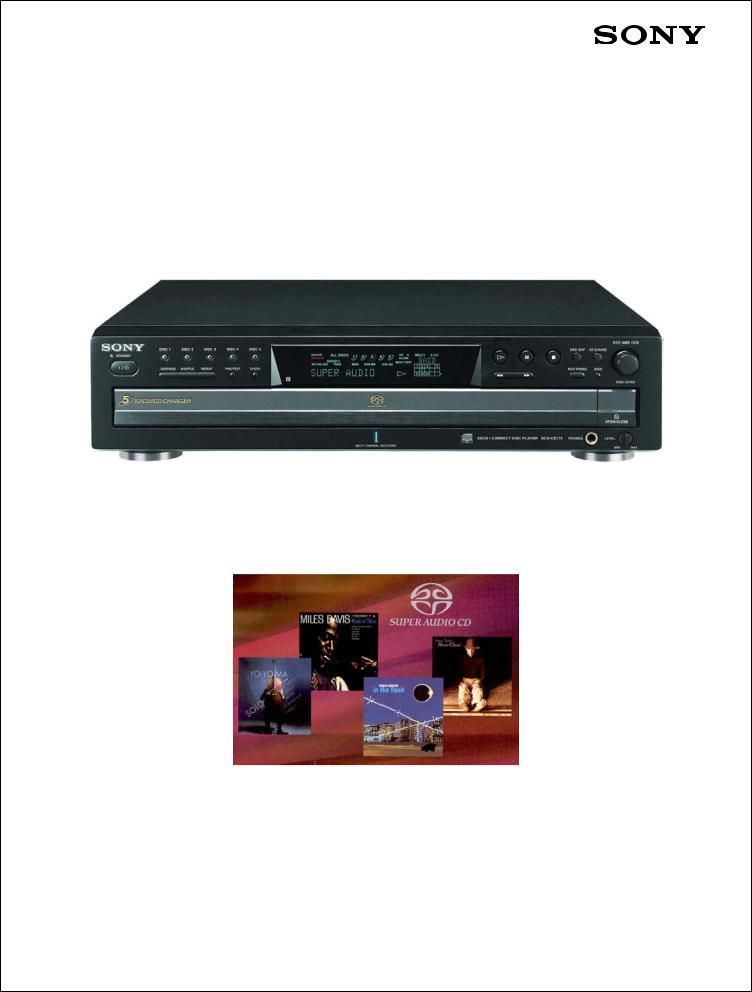
Super Audio CD Playback
A music source, Super Audio CD belongs in any discussion of Home Theater thanks to multi-channel sound capability. You haven't enjoyed the ultimate in home audio reproduction until you've heard a multi-channel Super Audio CD reproduced over a multi-channel speaker system. Thanks to Sony's Direct Stream Digital™ recording technology, the sound is an obvious improvement over Compact Disc and other digital audio systems. And thanks to multi-channel sound, it doesn't just appear as if the musicians are playing in your living room. It sounds as if you're transported from your living room into the original performance space.
Over 600 Super Audio CD titles range from landmark jazz and classical recordings of the analog era to the latest in rock and pop. The Super Audio CD catalog includes labels as diverse as Universal, AudioQuest, Chesky Records, Columbia, Delos, DMP, Epic, Legacy, Sony Classical, Telarc, EMI and Virgin Records, to name just a few.
Over 600 titles of stereo and multi-channel Super Audio CD represent a passion for beautiful music, beautifully reproduced.
As you'd expect, you can find Super Audio CD playback in dedicated audio players. But you can also find the capability in many DVD-Video players and selected home theater packaged systems.
The Sony Guide to Home Theater |
10 |
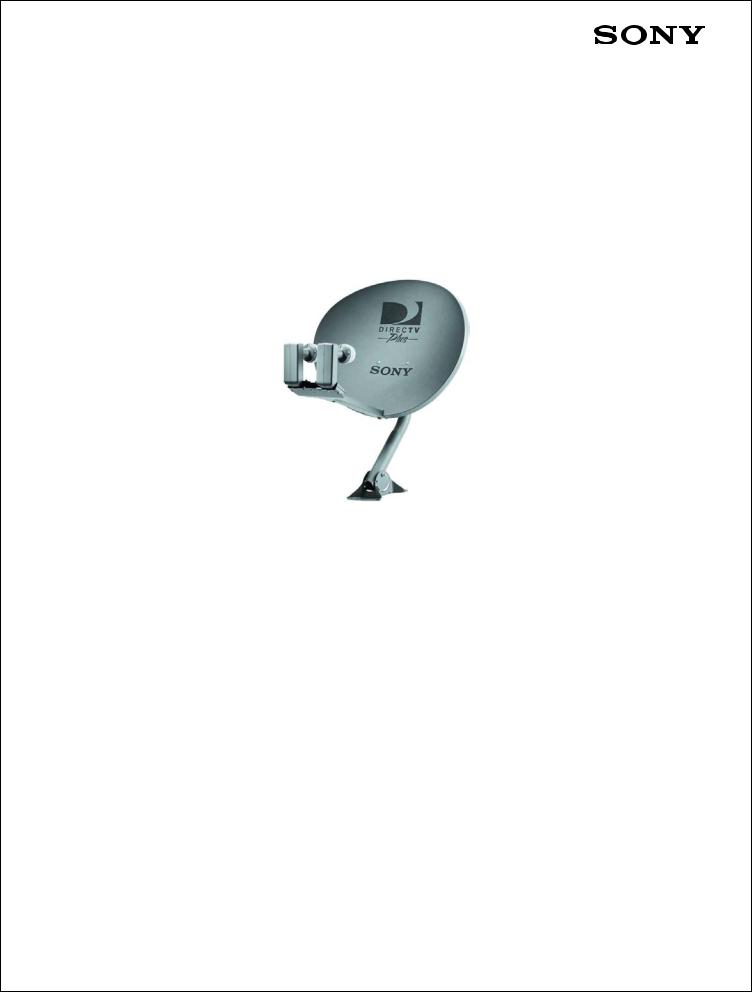
Digital Satellite Receivers
With over 200 channels of entertainment, the DIRECTV® service brings an incredibly rich array of programming options into your home. Subscribe to the service and you'll be able to choose from pay-per-view movies and events, college and professional sports packages, plus a long list of cable favorites. And in many cities, you can even enjoy your local TV channels, brought to you by satellite! The DIRECTV service provides digital picture quality, plus CD-quality digital sound including Dolby Digital surround sound on selected channels. And the DIRECTV service even delivers selected channels in the glory of High Definition TV!
Features to look for:
Support for DIRECTV local-to-local and multi-satellite programming. The new receivers get the full benefit of the expanded DIRECTV channel lineup.
Dolby Digital optical passthrough. To enjoy surround sound, you'll want to connect the optical digital audio output of the DIRECTV receiver to your A/V receiver.
High Definition reception. If you own or you're thinking of buying a "high scanning," "High Definition monitor" or "High Definition upgradeable" television, you should give serious consideration to a High Definition DIRECTV receiver. With the right subscription, you'll have access to unforgettable pictures on HBO and Showtime, in addition to sports and other programming on HDNet.
Powerful on-screen guide. With over 200 channels to choose from, you'll want a receiver that makes choosing entertainment easy.
One button record. Make sure your DIRECTV receiver works seamlessly with your videocassette recorder or personal video recorder. The infrared "blaster" supplied with many satellite receivers can automatically switch your recorder on, put it into the record mode and turn it off when the recording is done!
The Sony Guide to Home Theater |
11 |

About High Definition Television
High Definition TV will dazzle you with up to six times the picture detail of conventional TV. HDTV means a widescreen 16:9 picture with cinematic sweep and grandeur. It also means Dolby Digital sound, including surround sound for movies and TV dramas. Best of all, High Definition television is not a promise for the future. It's here today. The DIRECTV satellite service carries three HDTV feeds (HBO, Showtime and HDNet) to a national audience. Some cable TV services are beginning to offer High Definition feeds. And HDTV is becoming more and more available in over-the-air TV broadcasting.
In May 2003, the National Association of Broadcasters (NAB) reported that 885 television stations in 189 cities are broadcasting digital signals that can be received in 97% of American homes. More than 78% of homes are in markets with five or more digital television broadcasters. And many of these digital broadcasts are in High Definition.
An April 2003 NAB listing of shows broadcast in High Definition includes 8 Simple Rules for Dating My Teenage Daughter, Alias, American Dreams, Crossing Jordan, Becker, CSI: Crime Scene Investigation, CSI: Miami, The Drew Carey Show, Everybody Loves Raymond, Frasier, Hack, JAG, The King of Queens, NYPD Blue, The Practice, Reba, Robbery Homicide Division, Smallville, The Tonight Show with Jay Leno and Without a Trace, plus 40 other network TV shows.
This doesn't even count HDTV sports and special events, which have included NCAA football, the Rose Parade, the Super Bowl, the U.S. Masters Golf Tournament, the U.S. Open Tennis Championships, and the 2002 Winter Olympics. In addition, ABC has announced that it will transmit the NBA finals and the Stanley Cup, as well as the 20032004 season of Monday Night Football in HDTV.
For many viewers, one stumbling block on the road to HDTV has been the relative lack of local HDTV broadcasts over cable TV. But recent agreements between representatives of the consumer electronics industry and the cable television industry have done much to clear the way to widespread distribution of local HDTV broadcasts over cable.
The U.S. recommendations for Digital Television (DTV) broadcasting actually encompass 18 different television formats. High Definition TVs and HDTV set top boxes (usually called "HDTV receivers") are designed to tune all 18 formats. Six of these are designated as "High Definition," while the others are called "Standard Definition." All but a few formats can deliver a visibly better picture than conventional television. Broadcasters have been encouraged, but not required to use their DTV spectrum for High Definition.
The Sony Guide to Home Theater |
12 |

Active |
Horizontal |
Aspect |
Picture Rate (frames |
Definition |
Scanning |
Pixels |
Ratio |
per second) |
|
Lines |
|
|
P = progressive |
|
|
|
|
i = interlace |
|
1080 |
1920 |
16:9 |
30i, 30P, 24P |
High Definition |
720 |
1280 |
16:9 |
60P, 30P, 24P |
High Definition |
480 |
704 |
16:9 or |
60P, 30i, 30P, 24P |
Standard Definition |
|
|
4:3 |
|
|
480 |
640 |
4:3 |
60P, 30i, 30P, 24P |
Standard Definition |
Of the eighteen DTV broadcast formats, only the top six are designated High Definition. The Federal government has encouraged, but not required broadcasters to use their DTV spectrum for High Definition broadcasting.
High Definition TV (HDTV) Receivers
To receive over-the-air High Definition broadcasts, you can choose a television with a built-in HD receiver. But most customers are currently buying "high scanning," "High Definition monitor" or "High Definition upgradeable" televisions, which can connect to an outboard HDTV receiver, purchased separately.
HDTV receiver features to look for:
1080i, 720p and 480p outputs to serve the widest range of High Definition monitor televisions.
480i outputs to serve conventional televisions.
DIRECTV reception. Many receivers that will tune free, over-the-air HDTV also function for the subscription DIRECTV service. So you can get complete HDTV reception from a single set-top box.
DVI-HDTV interface enables superb, uncompressed digital-to-digital connection from the set-top box to the television. Your High Definition signal is carried with full picture quality. The connection is also secured by HDCP technology to protect the signal from piracy.
The Sony Guide to Home Theater |
13 |
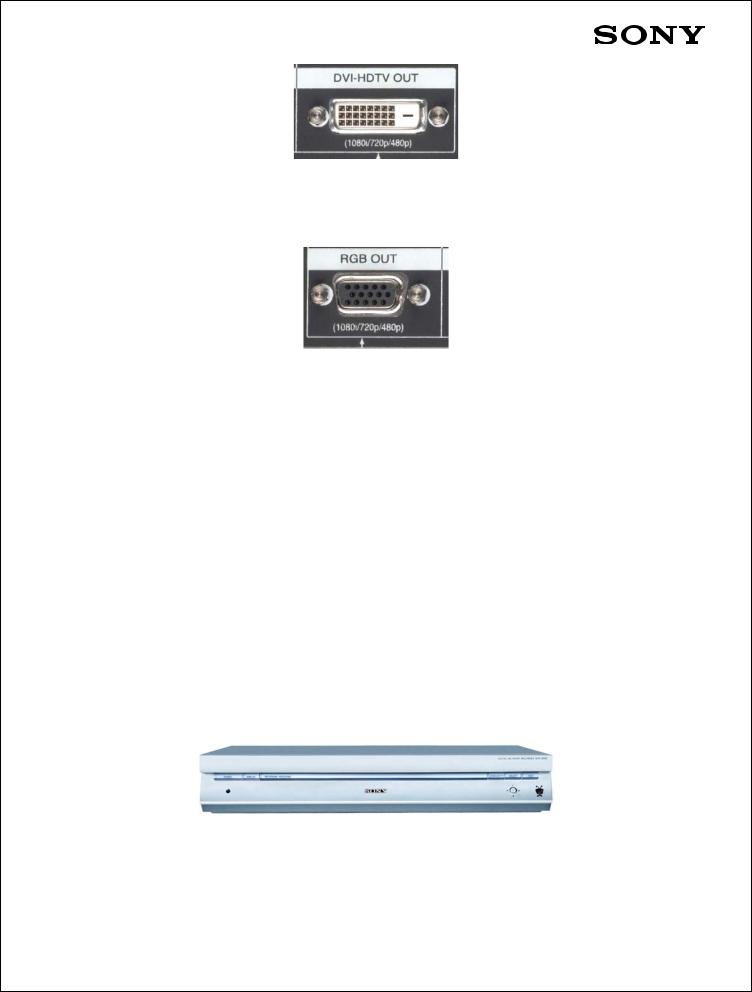
The DVI-HDTV interface carries High Definition in full digital quality.
Component video outputs enable high-quality analog connection to a television. The separate components of the video signal can be Y/Pb/Pr or R/G/B.
The D-sub 15-pin interface supports component video R/G/B signals.
Dolby Digital optical passthrough. To enjoy surround sound, you'll want to connect the optical digital audio output of the HDTV receiver to your A/V receiver.
Personal Video Recorders
A new generation of devices can record up to 80 hours of television onto a builtin hard disk drive. This does so much more than the conventional VCR. You can pause live TV when you need to take a break, then resume watching exactly where you left off. So you're always free to take a phone call or take a trip to the kitchen. You can "rewind" live TV and repeat a line of dialog that you might have missed. And you can have the recorder capture up to 80 hours of TV shows, ready for viewing whenever you choose! You can even rate TV shows as good or bad, and the recorder will "learn" your preferences. The recorder can then automatically analyze the schedule of upcoming shows and suggest programs with the actors, genres and subject matter you've liked in the past. It's like having your own, personal TV critic on hand, ready to make the most of every minute you spend viewing!
Features to look for:
TiVo™ service. This subscription service brings you electronic program guides. The recorder can also "learn" your preferences and record shows similar to the ones you like—a great way to discover new favorites.
The Sony Guide to Home Theater |
14 |
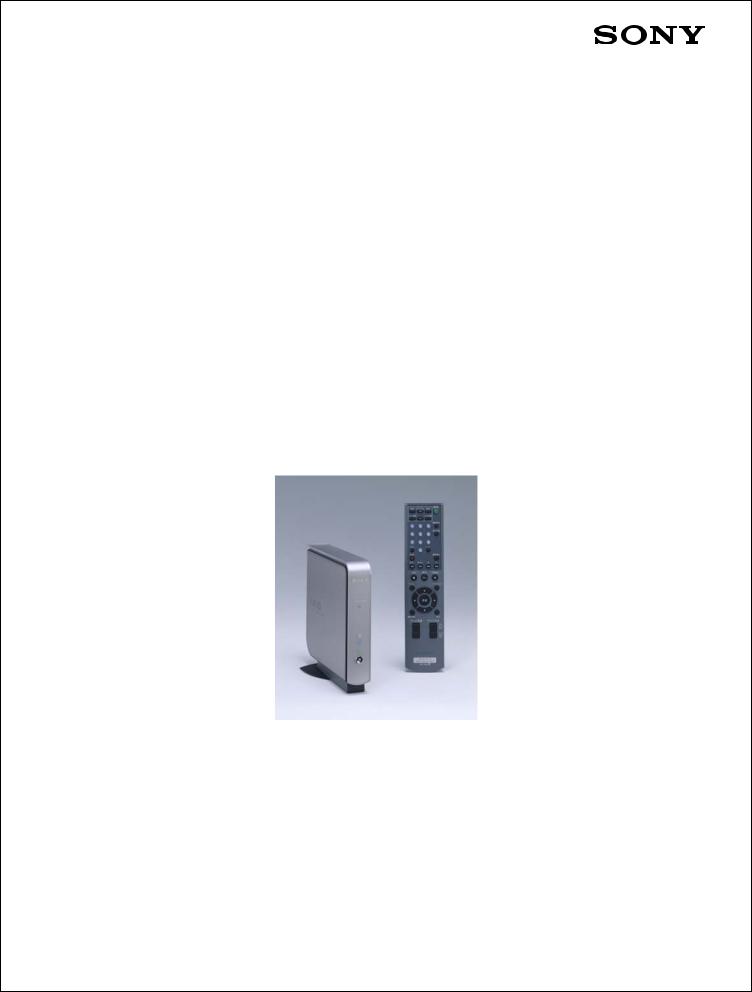
Simultaneous record and playback. Here's another trick that hard disk recorders can do that VCRs can't. This feature lets you record a current show onto the unit's hard drive, even while you're watching another show that you've previously recorded!
Season Pass automatically records every episode of your favorite show every time it airs—even if the network changes the schedule.
Wish List records upcoming shows with your favorite actor, actress, director or keyword.
Auto VCR Transfer saves programs onto VHS tapes.
Network Media Receiver
Today's personal computers are increasingly important repositories of audio and video entertainment. The ability to download, store and play music is rapidly being joined by the ability to digitally record television shows onto the PC hard drive. Sony's own Giga Pocket™ personal video recorder brings exactly this TV recording function to selected Sony VAIO® PCs. In many homes, entertainment from the PC can be distributed throughout the home via Ethernet cable or 802.11a wireless network. What's been missing is a device to convert this entertainment from the IP language of networking to the audio/video outputs required for a home theater system.
About the size of a paperback book, the PCNA-MR10 RoomLink™ media receiver delivers home entertainment content from a compatible PC to your home theater system!
Now Sony meets this need with the PCNA-MR10 RoomLink™ media receiver. The receiver has an Ethernet port on one side, and audio/video outputs on the other. It can deliver music, digital still pictures, video and live television from compatible VAIO PCs with VAIO Media™ software installed. Using the RoomLink receiver remote control, you can browse menus on your television screen, giving you access to the entertainment on your PC!
The Sony Guide to Home Theater |
15 |

If your network provides no Ethernet cable near the home theater system, the receiver can be connected to a Sony PCWA-DE50 for 802.11a wireless LAN connection to a compatible wireless LAN access point.
VHS Hi-Fi VCRs
Even in the age of DVDs and personal video recorders, the old VCR still has a role to play. Some movies are not yet released on DVD and some rental stores still have more VHS cassettes than DVDs. You may own a shelf full of VHS movies that you still want to play. VHS tapes are also easy to record and exchange with friends and family. And VHS Hi-Fi tapes often contain Dolby Stereo sound tracks, suitable for Dolby® Pro Logic® processing at home. This produces surround sound that's satisfying and dynamic.
Features to look for:
VHS Hi-Fi. An absolute must for high fidelity stereo sound.
VCR Plus+ Gold™ system automatically "maps" your local channel line-up. Programming the VCR becomes as easy as dialing a telephone number, thanks to the PlusCode® numbers you'll find in many newspaper TV listings and TV Guide® magazine.
Four Heads. Two heads for SP speed and two for EP optimize playback picture quality. They also enable better freeze frame, frame advance and picture search special effects.
Built-in DVD player. A combination VHS/DVD player can save space and prevent remote control clutter.
The Sony Guide to Home Theater |
16 |
